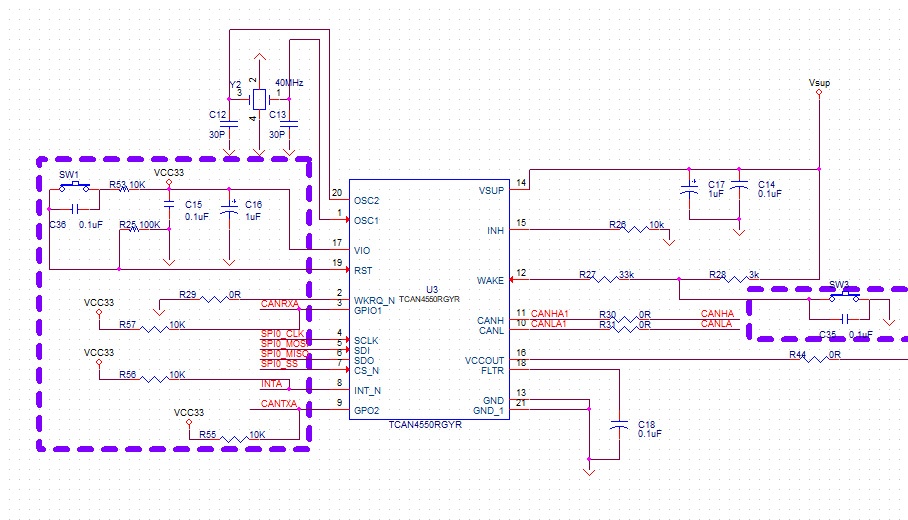Other Parts Discussed in Thread: TCAN4550, TCAN4550EVM
Hi,
We are using TCAN4550-Q1 for CAN bus for communication.
Please help to check whether the schematic is OK?
We use the schematic to product a prototype for test. The SPI communication is work fine, but when I send CAN message to TCAN4550 there is no message goes out from CANH and CANL.
Then I check the TCAN4550 mode. I set it to normal mode sometimes it will success, sometimes it still in standby mode.
When it success to normal mode, I send some CAN message from other device TCAN4550 get the first one or two message then change the mode to standby mode itself.
I test the same way on TCAN4550EVM It work fine, the mode can still keep in normal mode.
Do you have any idea?


